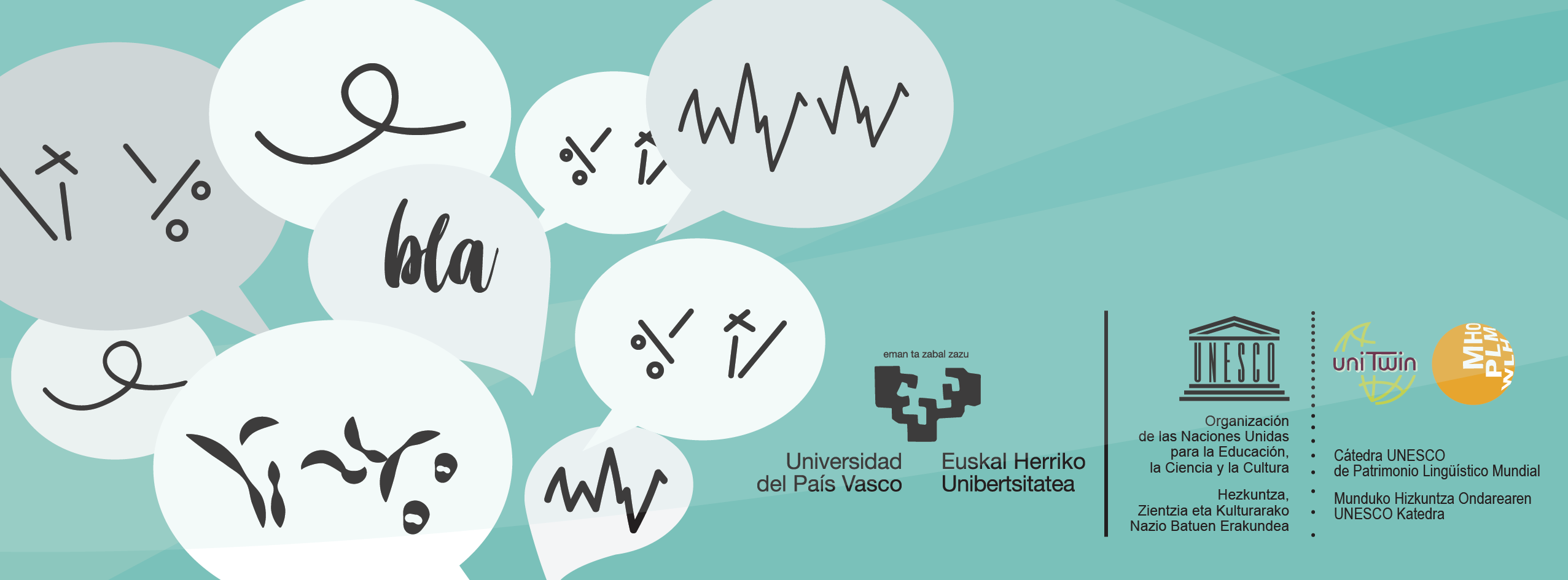IN THE INTERNATIONAL YEAR OF INDIGENOUS LANGUAGES WE WANT TO RECLAIM MINORITIZED MOTHER TONGUES 21-02-2019
First publication date: 13/02/2019

With the purpose of condemning and confronting language loss, on February 21st International Mother Tongue Day is celebrated every year.
This year is a special one, 2019 has been named the International Year of Indigenous Languages (IYIL2019) by the United Nations (UN).
The word “indigenous” refers to the inhabitant of a certain territory. The inhabitants of that territory form a community and they share cultural and linguistic features.
Those communities live in contact with at least one hegemonic language and due to prestige reasons, many times, the language that is left aside is the native tongue, and that provokes a stop in the transmission of language and culture, leaving both in danger of survival.
Indigenous communities compose the 6% of the world’s population, but, they also contain 4,000 different languages. There are more than 6,000 languages in the world, so indigenous languages compose more than half of the world’s languages.
Those communities store languages, cultures, different ways of doing or seeing the world, and cognition developed through years, which are basic things to keep individual and group identity.
Many indigenous languages are minoritized, and those languages, in general, apart from having limited options for language use, they also have difficulties to be normalized. An example of that difficulty or limit is the school.
In favor of the prestigious language, and against the family language, it is very common to educate the children in the hegemonic language, which is usually the only official language. And that contributes to the interference with indigenous language transmission.
We all have the right to learn and develop our mother tongue or first language, but that is more difficult for minority languages. Even if in 1953 UNESCO claimed that the education language should be the mother tongue, many indigenous and minority languages do not have any presence at school or that presence is not enough to keep the language alive, even less to revitalize it. Therefore, many languages are in danger of loss.
| A language is lost every two weeks and together with the language, the cultural and intellectual heritage too. |
Although it is unnoticed, speakers of a minority or indigenous language are often multilingual, and they generally also know the hegemonic language. In addition, frequently, these speakers know the languages of their bordering areas. We would like to emphasize the value and strength of multilingualism, because through the empowerment of indigenous communities we can move towards models of multilingual schools which take the minority mother tongue as their axis and thus become the driving force of sustainable development. We want to associate this circumstance to the naming of year 2019 as the International Year of Indigenous Languages by the UN.
The namings of the International Year of the Indigenous Languages and the International Day of the Mother Language seem important to us to insist on the value of minority languages, to make them known and so that they can be treated equally.
It is essential to maintain these languages, revitalize them, and promote their use not only to preserve linguistic diversity, but also to guarantee the survival of the peoples and, of course, so that the Sustainable Development Goals of the 2030 Agenda can be fulfilled.
The UNESCO Chair of World Linguistic Heritage of the UPV/EHU has also contributed its bit to this project. Thus, to commemorate the International Year of Indigenous Languages, we have created a digital animation to give voice to both our closest languages and indigenous languages.
We want to thank all our collaborators for the help they have given us to give voice to all these languages: O. Sagastume (Basque); Luís Pérez Barral (Galician); Gonzalo Larreategui (Spanish); A. Olçomendi (French); A. Ortega (English); Adrian A. and Beatrice D. (German); C. Ruda (Nasa-yuwe); Felix Taruire Cario (Guarani); Martin Gonzalez (Mixtec); Mohand Tilmatine (Kabyle); Pádraig Ó Duibhir and Laoise Ni Thuairisg (Gaelic); Ximena Flores (Quechua); Waxie Maura Carrillo Sotero (Huichol); Morgane Lincy (Breton); Payam Mohammadi and Kijhan Salmani (Kurdish); Mwema Children Centre (Swahili); Enlli Thomas (Welsh); Cecelia Taukapo (Tongan).
In the table below you can select and listen to the animation in different languages.
If you cannot find your language and want it to be included, contact us (unesco-hizkuntzak.katedra@ehu.eus) and together we can make the claim stronger.
| IYIL2019 | |
|---|---|
| Language and YouTube link | Language and YouTube link |
| Basque | Nasa-yuwe (Cauca, Colombia) |
| Catalan | Guarani (Bolivia) |
| Galician | Tseltal (Chiapas, Mexico) |
| Spanish | Mixtec (Oaxaca, Mexico) |
| French | Kabyle (Kabylia, Aljeria) |
| German | Gaelic (Ireland) |
| English | Lingala (Democratic Republic of the Congo) |
| Quechua | |
| Huichol (Jalisco and Nayarit, Mexico) | |
| Breton (Brittany, France) | |
| Kurdish (Iran) | |
| Swahili (Tanzania) | |
| Welsh (Wales) | |
| Tongan (Tonga, Australia) | |
| MOTHER TONGUE DAY (FEBRUARY 21) VERSION | |
|---|---|
| Language and YouTube link | Language and YouTube link |
| Basque | Nasa-yuwe (Cauca, Colombia) |
| Catalan | Guarani (Bolivia) |
| Galician | Tseltal (Chiapas, Mexico) |
| Spanish | Mixtec (Oaxaca, Mexico) |
| French | Kabyle (Kabylia, Aljeria) |
| German | |
| English | |
